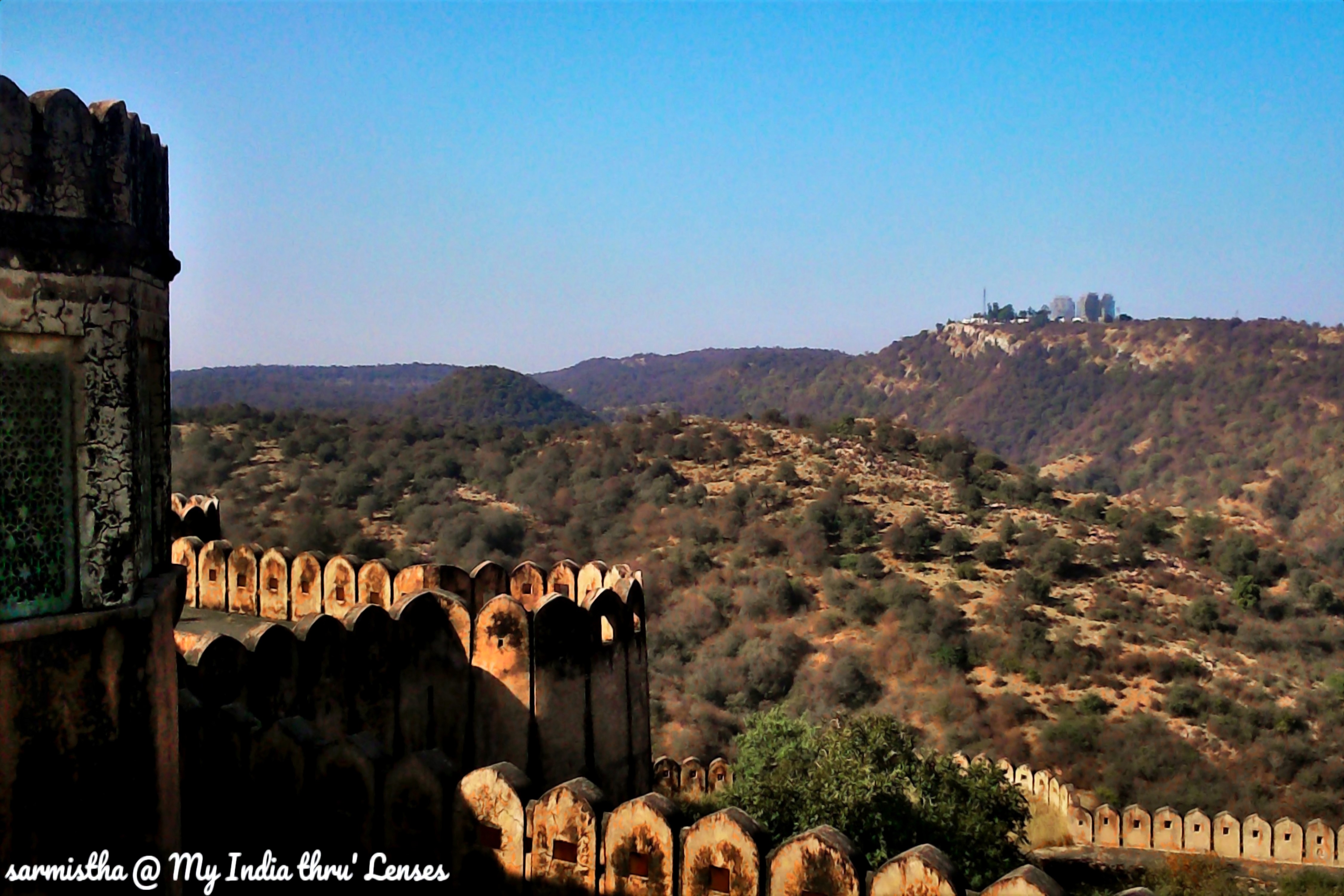Reading Time: 9 mins
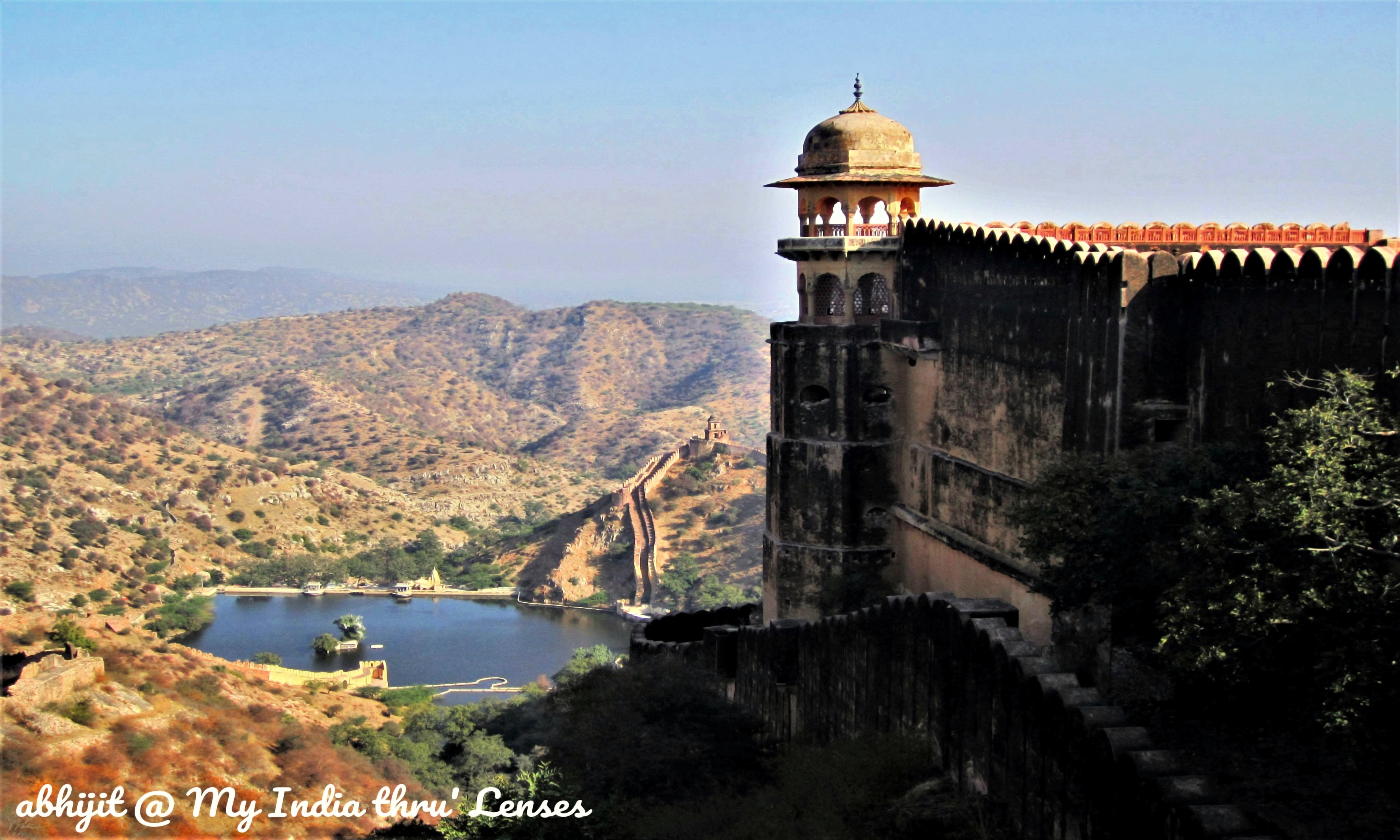
Located at a distance of 11 kms from the heart of Pink City Jaipur, the Jaigarh Fort is one of the top tourist attractions of the city. Built with red sandstone on a high hill in the Aravalli Ranges, the Jaigarh Fort, with its massive fortification walls, appears quite impressive even from a distance. The fort houses several attractive structures including a cannon foundry dating back to 17th-18th century and the Jaivana, the world's largest cannon on wheels at the time of its manufacture in 1720. In addition to a rich history, the fort is also associated with a 450-year-old popular folklore on Man Singh’s Treasure that became newspaper headlines even in the late 1970s.
The road approaching Jaipur runs through a pass in the Ranges of Aravalli and at the end of the pass lies the beautiful fort of Amber (Amer) overlooking Maota Lake. Located at a distance of 11 kms from Jaipur city, Amer was the original capital of the Jaipur Royal family. To the west of Amber Fort on a hill called ‘Cheel ka Teela’ (‘Hill of Eagles’), the Jaigarh Fort was constructed at a much higher elevation in order to provide security to the former, such that, if Amber was threatened, the inhabitants could retreat into Jaigarh fort to withstand a siege. The two forts are believed to be interconnected through subterranean passages. Besides protecting Amber fort, the Jaigarh Fort also used to serve as a storehouse of war armours, cannons, arms and ammunitions. It was also known as the Fort of Victory as it was never conquered.
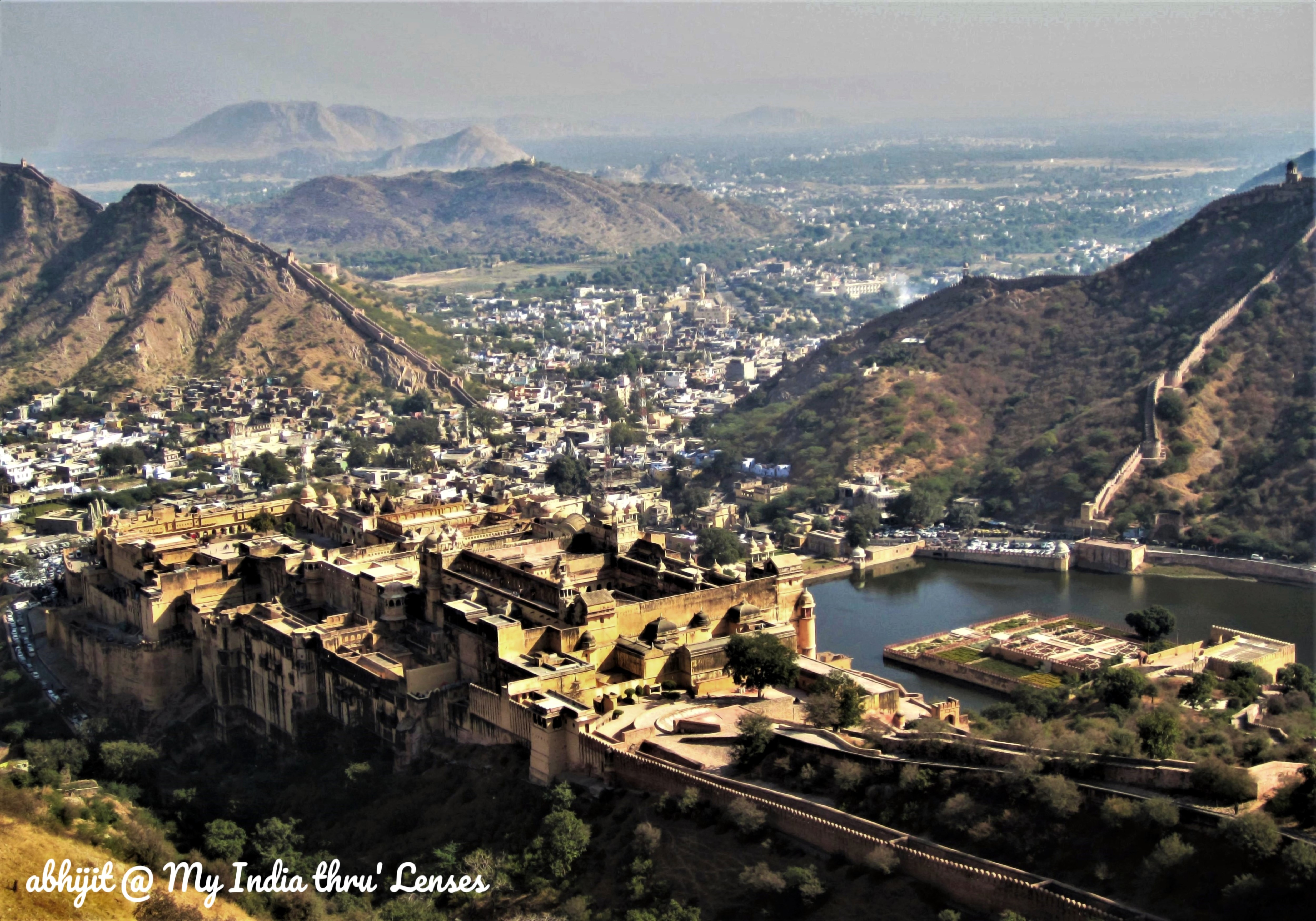
Throwback to the Era of Akbar - 450 years ago: The Origin of the Folklore on Man Singh's Treasure
Raja Man Singh, born in 1540, was the Maharaja (King) of Amber. He was one of the famous ‘Navaratnas’- the nine gems of the Royal Court of Mughal Emperor Akbar. Although a Rajput, Man Singh rose to the post of Commander-in-Chief of the Mughal army and the Emperor had a huge reliability on him. In fact, Man Singh was Akbar’s nephew-in-law, as his aunt Jodha Bai was married to Akbar. The marriage of Akbar to Jodha Bai was political and it cemented the ties between the Mughals and the Jaipur province. [Some historians have challenged the fact that Jodha & Maharaja Man Singh belonged to the same family. There is even controversy on whether marriage of Akbar with Jodha or any other Rajput queen happened at all!]. Whatsoever, as a trusted general of Akbar, Man Singh fought several battles paving the way for expansion of Mughal Empire, including the famous battle of ‘Haldighati’ against Maharana Pratap.
Afghans, that time, were continuously creating disturbances along the north-western part of Mughal Empire and thus Akbar ordered Man Singh to subjugate the Afghans. Man Singh crossed Khyber Pass and invaded Afghanistan in 1580. After a series of wars against the Afghans, he was able to suppress them. He conquered a major part of Afghanistan, held the position of Mughal governor of Kabul for 6 years and finally returned to Amber with a large amount of wealth. The territories that he won became parts of Mughal Empire, but the wealth he looted didn’t become part of Mughal Treasury. Jaipur folklore alleges that Man Singh never returned the entire amount of wealth to Akbar, but hoarded, at least a large part of it, in Jaigarh fort. This was the origin of the folklore on Man Singh’s Treasure, which has remained popular for a descent of time as long as 450 years. Some believe that the treasure was stored in the underground tank in the fort courtyard (the guides inevitably will make you believe that).
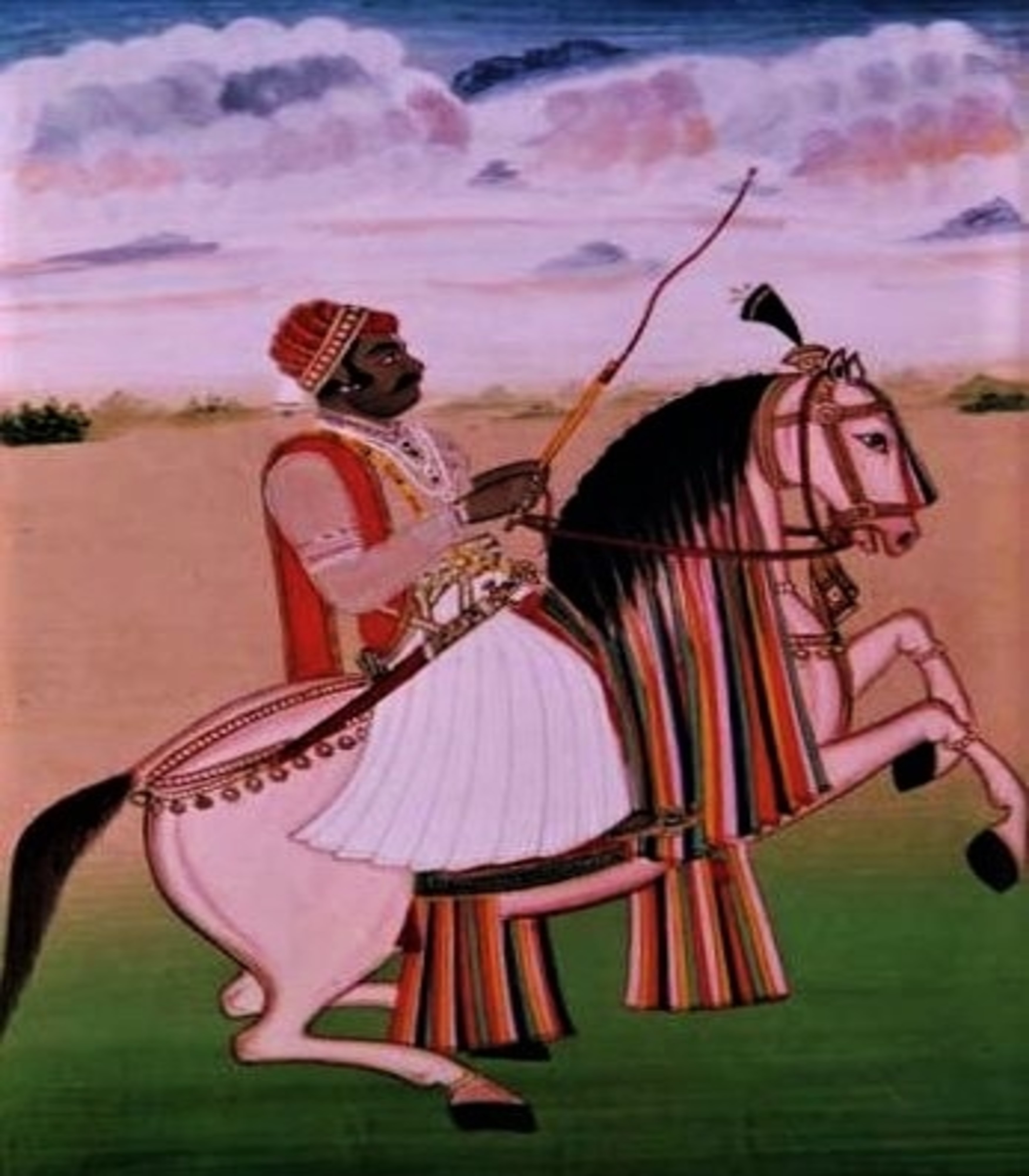
Fast-forward approx. 100 years to Aurangzeb's Era
When Aurangzeb became Mughal Emperor, Man Singh’s counterpart in Jaipur was Jai Singh II. During one of Aurangzeb’s campaigns, Jai Singh was summoned. He arrived late as he had a love affair on the way. Jai Singh conjured up a smart excuse that led Aurangzeb to remark, “You are more than one, you are one plus a quarter.” Since then the title Sawai (‘Sawa’ means ‘One and a quarter’) stuck to the Jaipur Royal family. They also used to fly two flags: a full-sized one and a quarter flag below it. It was Sawai Jai Singh II, who planned & constructed Jaipur city with broad & straight roads to form a grid across the town. The Jaigarh fort was also renovated by him in 1726. He commissioned the Jantar Mantar observatories at multiple places in India, including Jaipur.
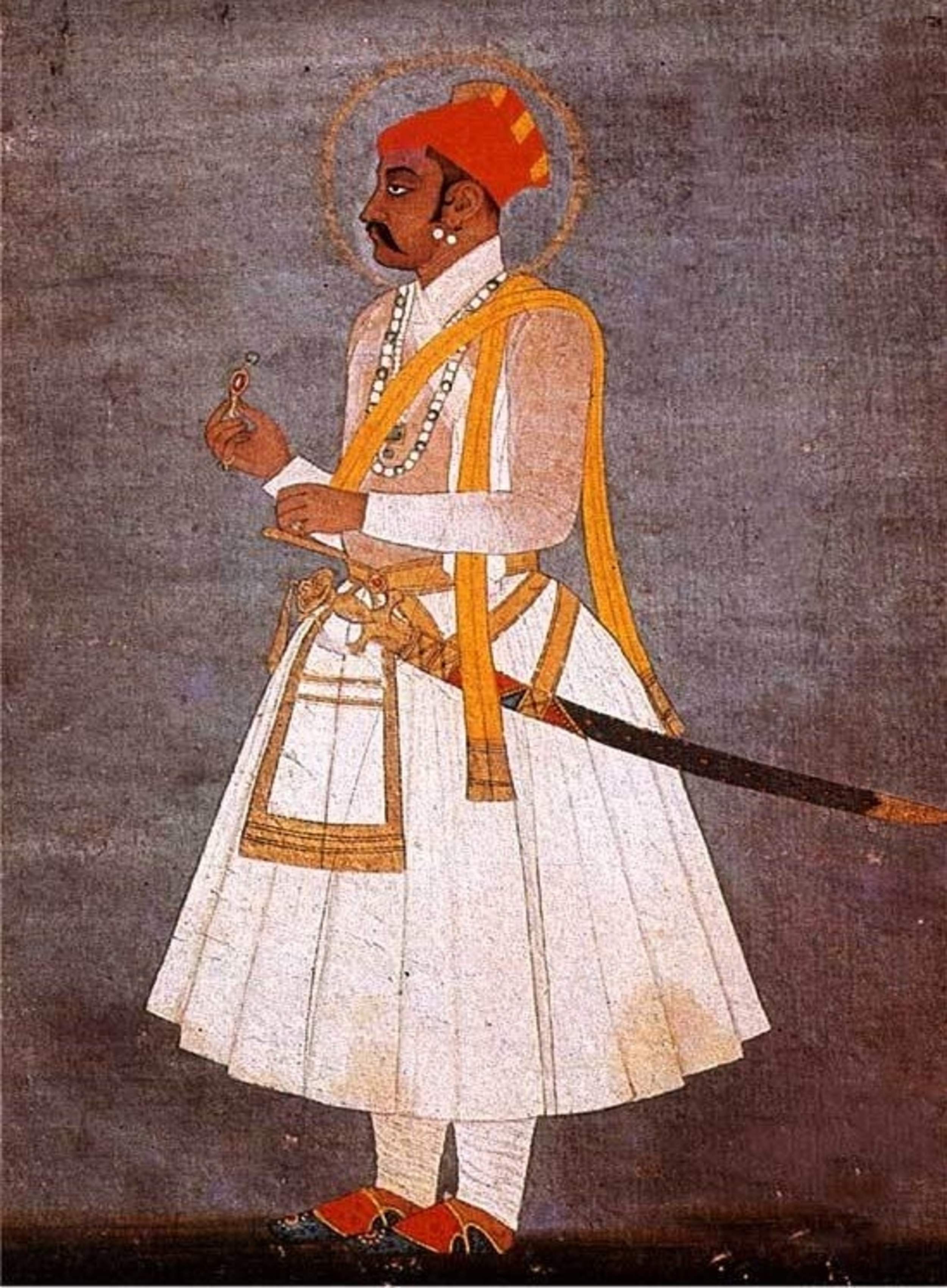
Fast-forward approx. 250 years to Pre- and Post-independent India
Just before Independence, the Maharaja of Jaipur was another Man Singh (Man Singh II) who married Gayatri Devi, princess of Cooch Bihar (presently it’s a district in West Bengal). Thus Gayatri Devi became Maharani (Queen) of Jaipur. After independence, when the princely state of Jaipur was annexed to the Union of India, ‘Maharaja’, ‘Maharani’ & other Royal positions became ‘titular’ only. Gayatri Devi entered Indian politics as a Swatantra Party candidate, contested in Lok Sabha elections and defeated ruling Congress Party's candidate thrice.
In 1975, when nationwide emergency was imposed in India by the then Prime Minister Indira Gandhi, Gayatri Devi severely objected, which enraged an already upset Congress leadership. Gayatri Devi was imprisoned and an income tax raid was conducted at the Royal Residence of Jaipur. It’s rumoured that an old document of Sawai Jai Singh’s time, which mentioned the existence of treasure in the Jaigarh fort, was discovered. Curiously, all forts in Jaipur were under the care of the Archaeological Survey of India, except Jaigarh fort, which was in the custody of the Jaipur Royal family and not open for tourists.
The Government of India carried out a search operation in the Jaigarh Fort deploying an Army unit. The incident received immense publicity during those days and it even founds mention in Gayatri Devi's autobiography ‘A Princess Remembers’. After three months of relentless search, “official reports” declared the excavation work to be futile. Interestingly, immediately after the conclusion of the search, Delhi-Jaipur highway was closed to general public for three days to make way for army's heavy vehicles.
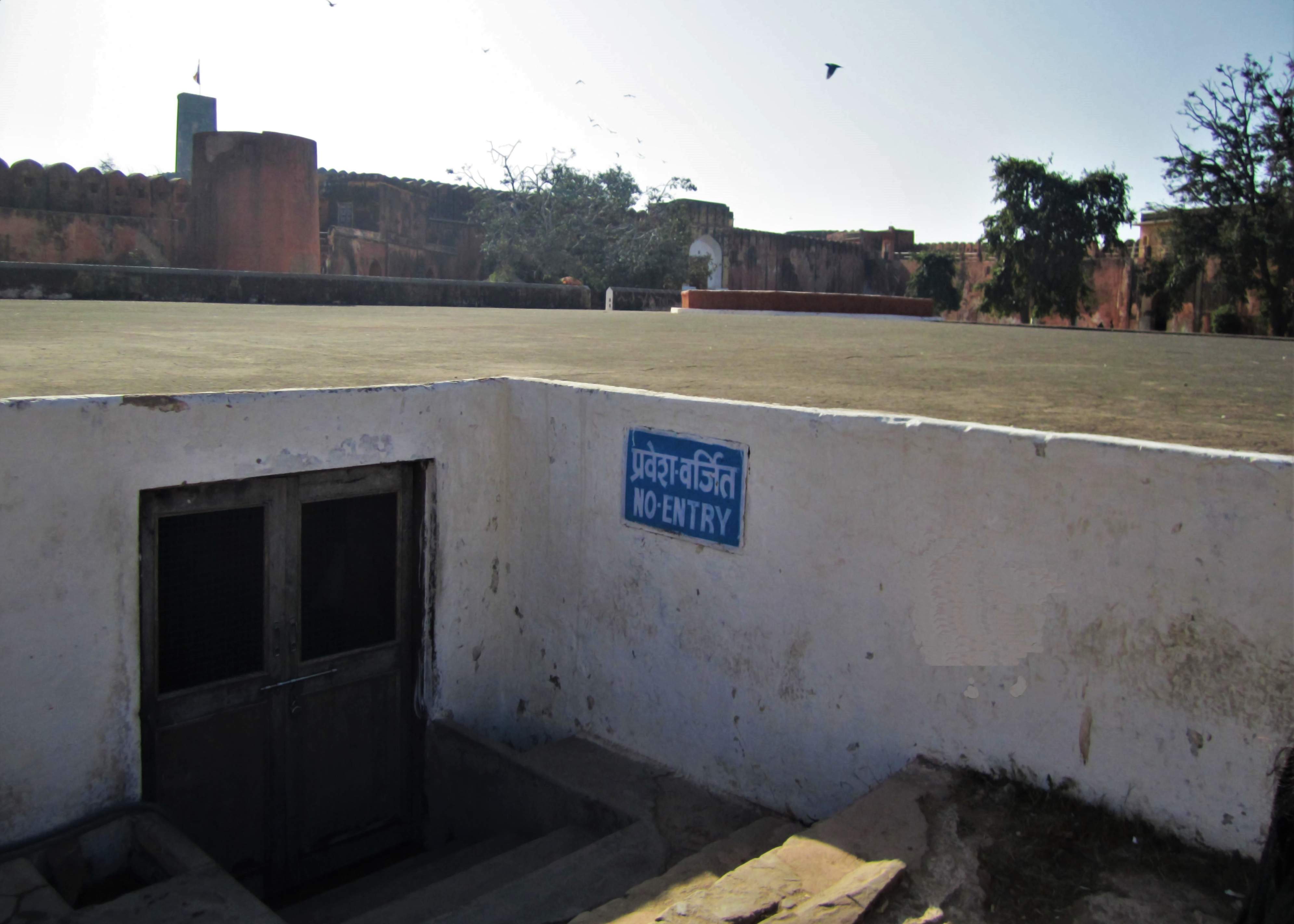
The mysterious underground reservoir in the fort courtyard. It is like any regular water reservoir, though huge in size. It has rainwater harvesting facility and the potential to store around 6 million gallons of water. It appears that the reservoir is renovated quite a number of times.
The Mystery Remained Unsolved
The 450-year-old mystery of Man Singh’s treasure, thus, remained unsolved. There are different popular legends about the treasure. First & foremost, the existence of treasure could itself be a myth. Some people believe that Sawai Jai Singh II used the treasure to build the Jaipur city, renovate the Jaigarh fort and construct various structures including Jantar Mantar. There is also another entirely different legend. According to that, after every conquest, Man Singh used to first present the loot to Jodha Bai before presenting it to Akbar. Jodha Bai used to skim a portion of riches and hide it in a temple in Fatehpur Sikri. Locals believe the temple over time was buried and the treasure still lies underneath the temple. The mystery remains unresolved.
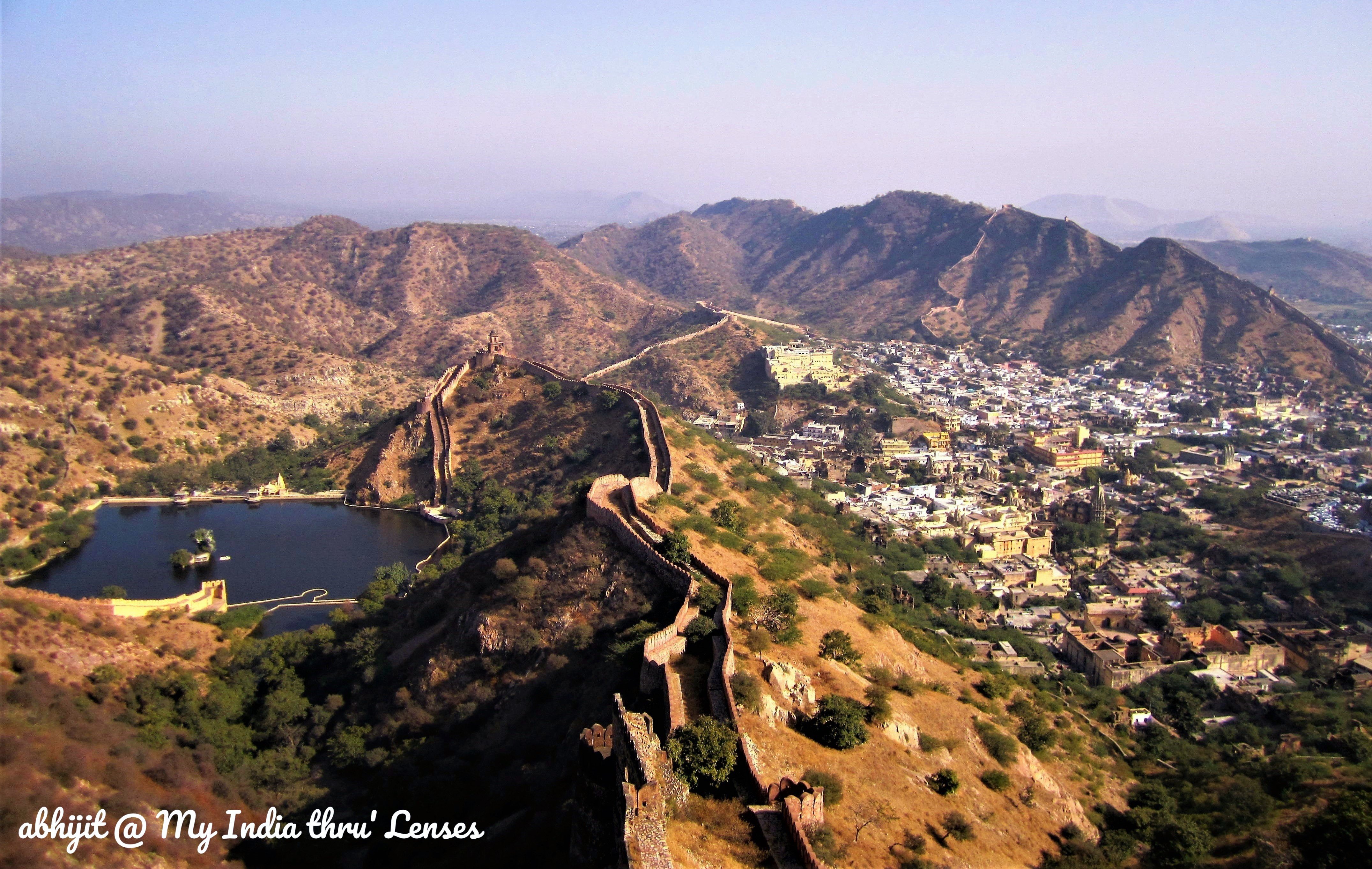
Jaigarh Fort: A Popular Tourist Destination Today
Whatsoever, the Jaigarh fort is very popular today, not for treasure hunting though! It is a famous tourist destination in Jaipur with various attractions. Fortified with thick walls of red sandstone, the fort grabs the attention of visitors with its unique approach, particularly the carvings on the walls and its rainwater harvesting system. Because of its position, the fort offers excellent panoramic view of the surroundings. There are various other attractions within the fort like Laxmi Vilas, Lalit Mandir, Aram Mandir & the Vilas Mandir.


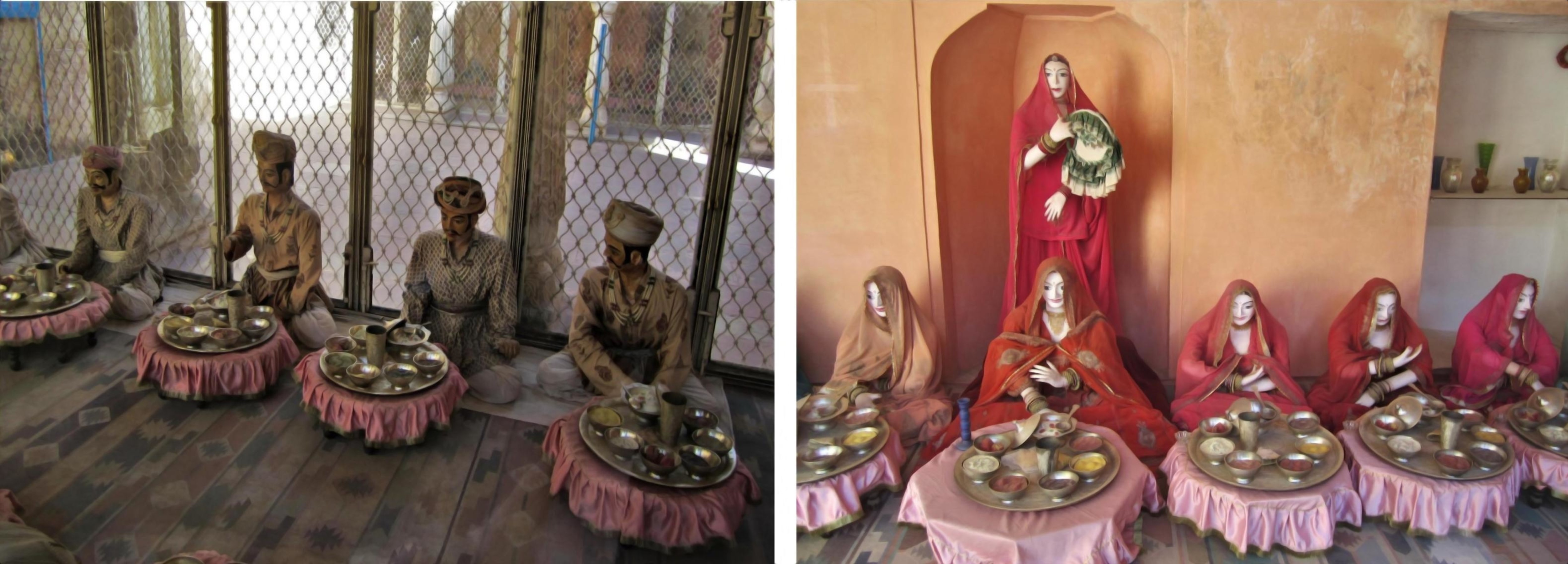
There are two temples within the fort area, the Ram Harihar temple and the Kal Bhairav temple dating back to 10th and 12th century respectively.
The Armoury: The armoury has a wide display of swords, shields, guns, muskets, cannonballs & other weapons. A few old photographs of Jaipur's Maharajas are also displayed.
The Museum: Located to the left of the Awami Gate, the Museum exhibits photographs of the royalty of Jaipur, stamps and many artefacts including a circular pack of cards, a spittoon & hand drawn plan of the palaces.
Charbagh: Charbagh is a Persian-style square garden inside the fort. Divided into four parts by walkways, the garden looks quite impressive.
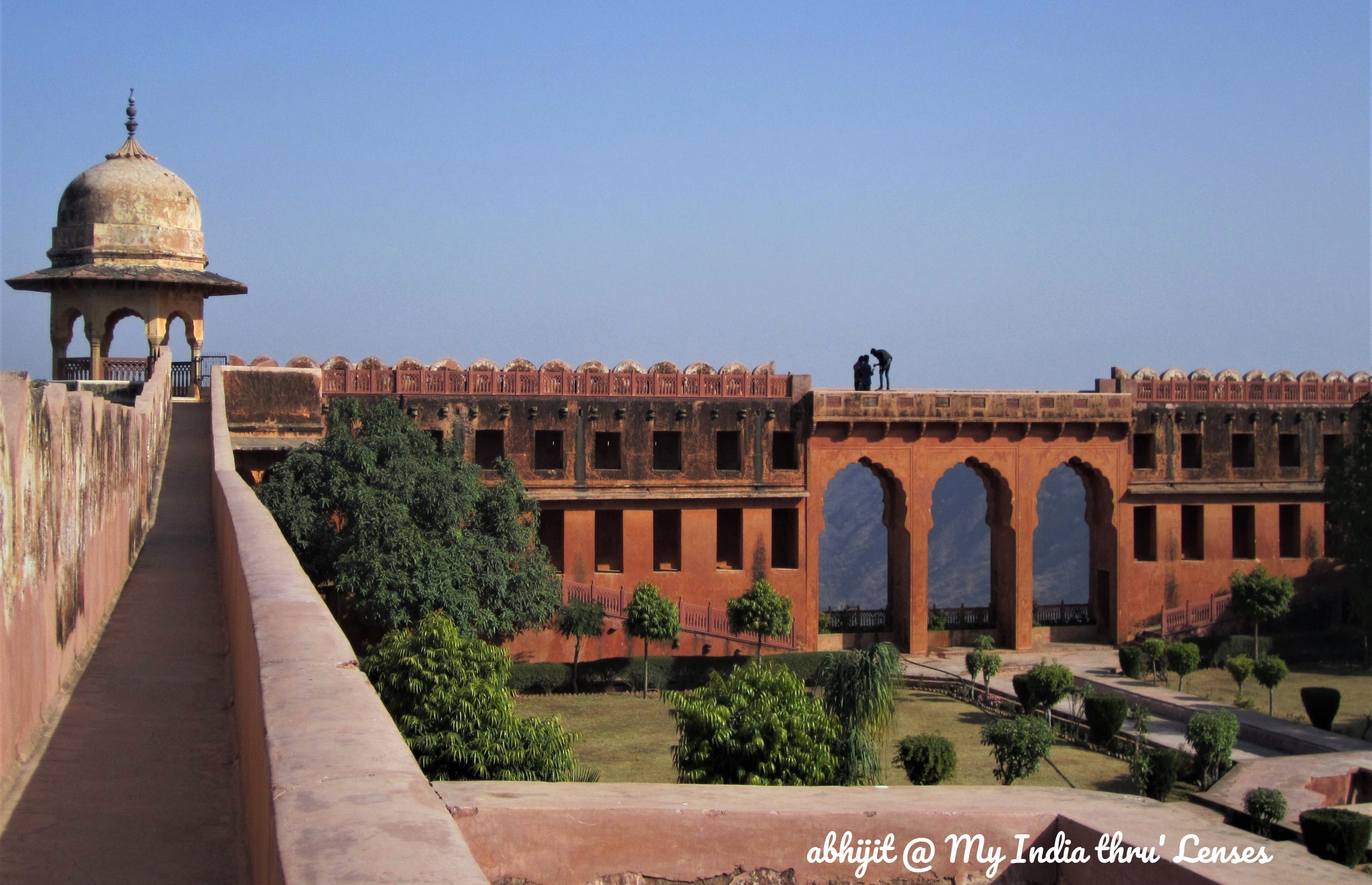
The two must-see things in the fort are, however, the Cannon Foundry, where cannons used to be manufactured during 17th-18th century and the Jaivana, the world's largest cannon on wheels at the time of its manufacture.
The Cannon Foundry
During the reign of Shah Jahan, the cannon foundry at Jaigarh Fort became one of the world's most efficient cannon foundries mainly due to the abundance of iron ore mines in the vicinity of the fort. The cannon foundry had a massive wind tunnel that sucked air from the high mountains into its furnace creating high temperatures to melt the metal. The molten metal would fill a reservoir chamber and pass into a cannon mould in the casting pit. There was also a large ingenious mechanical device that had a precision gear system driven by four pairs of oxen. The device was used for hollowing out the cannon barrels. When the Mughal war of succession broke out in 1658, Dara Shikoh secured the cannon outpost of Jaigarh Fort until he was defeated & executed by his younger brother Aurangzeb.
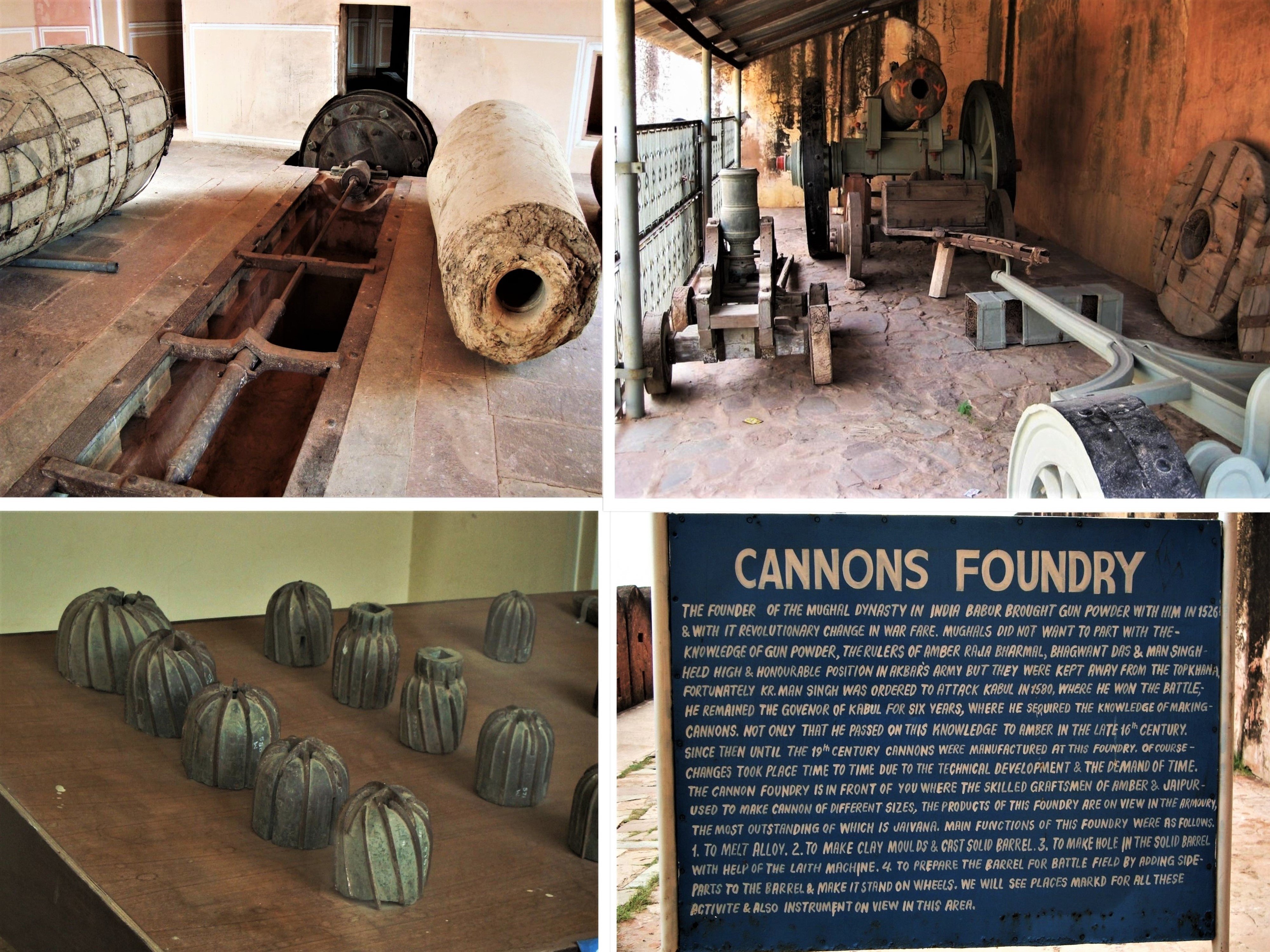
Various parts of the Tope Khana (Cannon Foundry). Here is what the first few lines of the board read: “The founder of the Mughal dynasty, Babur brought gun powder with him in 1526 & with that there was revolutionary change in warfare. Mughals did not want to part with the knowledge of gun powder. The rulers of Amber Raja Bharmal, Bhagwant Das & Man Singh held high & honourable positions in Akbar’s army, but they were kept away from the Tope Khana. Man Singh was ordered to attack Kabul in 1580, where he won the battle. He remained governor of Kabul for 6 years, where he acquired the knowledge of making cannons. He passed on this knowledge to Amber in the late 16th century. Since then until 19th century cannons were manufactured at this foundry.”
The Jaivana
The Jaivana was the world's largest cannon on wheels at the time of its manufacture in 1720. It was manufactured during the reign of Maharaja Sawai Jai Singh II at the Jaigarh cannon foundry itself. The cannon, with approx. 20 feet (6m) long & 11-inch diameter barrel, weighs 50 tonnes. The cannon is mounted on wheels and the rear wheels are fitted with roller pin bearings, to turn it 360° and fire in any direction. It had a range of 35 kms and used 50 kg balls. The cannon was, however, never used in any battle. It was fired only once with a charge of 100 kg of gunpowder. It is said that the person who fired it died because of the sound produced during the fire.
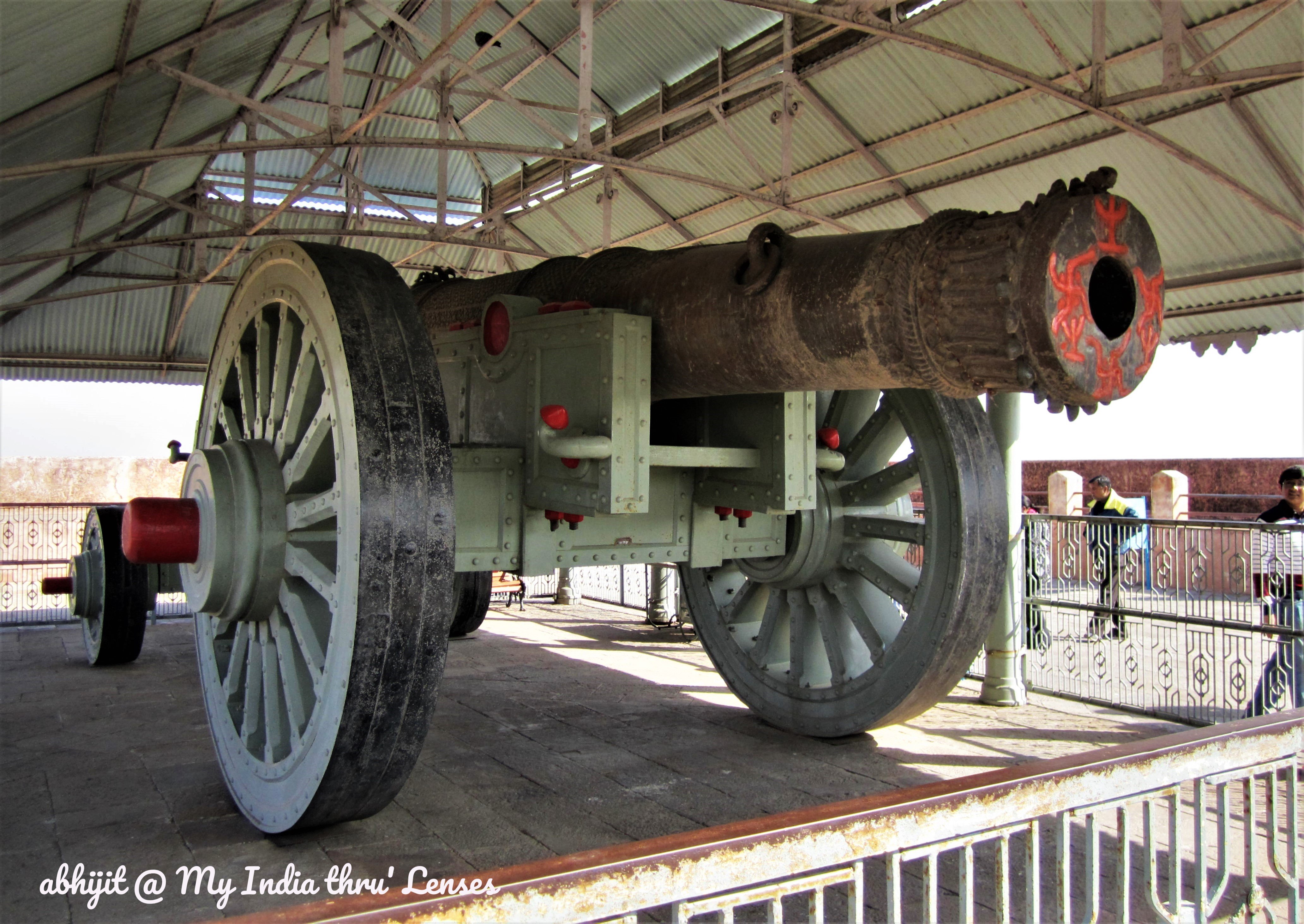
Information for Visitors
Timings: 9.00 am to 4.00 pm (IST) / All days.
Entry Ticket Charges
- Indians: INR 35/- per head
- Foreigners: INR 85/- per head
- Camera allowed
(It is recommended that you confirm Timings and Charges before going, because these keep on changing)
Approx. duration of visit: 1-2 hrs
References
- Unsolved mystery of the lost treasure of Man Singh 1, India TV News Article, (https://www.indiatvnews.com/news/india/unsolved-mystery-of-the-lost-treasure-of-man-singh-1-23249.html)
- Indiandefence.com (http://indiandefence.com/threads/did-indira-gandhi-loot-jaigarh-forts-treasure.50237/)
- Chequered past, C. N. Anand, Oct 24, 2009, The Hindu (https://www.thehindu.com/features/friday-review/history-and-culture/Chequered-past/article16888328.ece)
- What happened to Jaigarh Fort’s treasure and its connection with Indira Gandhi?, Panchali Dey, Sep 11, 2018, Times Travel (https://timesofindia.indiatimes.com/travel/destinations/what-happened-to-jaigarh-forts-treasure-and-its-connection-with-indira-gandhi/as65755597.cms)
